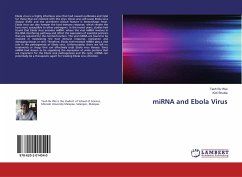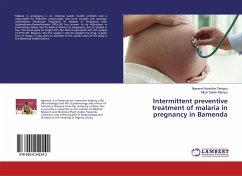
miRNA and Ebola Virus
Versandkostenfrei!
Versandfertig in 6-10 Tagen
27,99 €
inkl. MwSt.

PAYBACK Punkte
14 °P sammeln!
Ebola virus is a highly infectious virus that had caused outbreaks and fatal for those that are infected with this virus. Ebola virus will cause Ebola virus disease (EVD) and the prominent clinical feature is hemorrhagic fever. Ebola virus can also hamper the host immune response, which render the host more susceptible to other pathogens. In the recent years, studies had found that Ebola virus encodes miRNA, where the viral miRNA involves in the RNA interfering pathway and affect the expression of essential proteins that are required for the normal function. The viral miRNA are found to be inv...
Ebola virus is a highly infectious virus that had caused outbreaks and fatal for those that are infected with this virus. Ebola virus will cause Ebola virus disease (EVD) and the prominent clinical feature is hemorrhagic fever. Ebola virus can also hamper the host immune response, which render the host more susceptible to other pathogens. In the recent years, studies had found that Ebola virus encodes miRNA, where the viral miRNA involves in the RNA interfering pathway and affect the expression of essential proteins that are required for the normal function. The viral miRNA are found to be involved in modulating the host immune response, replication and damaging tissues or cells. Therefore, Ebola viral-encoded miRNA play a vital role in the pathogenesis of Ebola virus. Unfortunately, there are still no treatments or drugs that can effectively treat Ebola virus disease. Since miRNA had shown to be regulating the expression of some proteins that are important for the Ebola viral pathogenesis and life cycle, miRNA can potentially be a therapeutic agent for treating Ebola virus infection.












